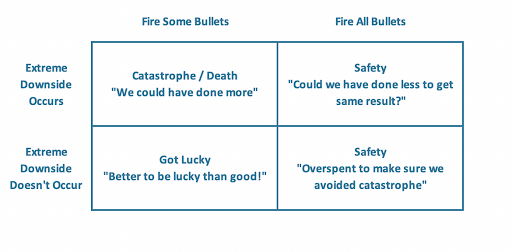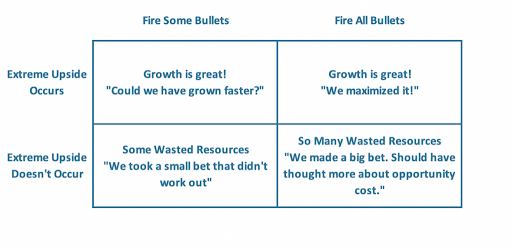In crisis situations, which Andy Grove famously called “wartime,” we need new styles of management and prioritization. Grove and others like Ben Horowitz have described what it’s like to be a “wartime CEO” but I haven’t ever seen anything about being a wartime CPO ...
Being a wartime CPO means two big things need to change: prioritization and evaluation.
How Eventbrite Survived the Pandemic
Prioritization
As you might surmise, Eventbrite has been in a wartime situation for over a year now. In February 2020, we became aware of a big problem. The company was off to a fantastic start to the year but we could see the tidal wave of a global pandemic coming. Neither we, nor the world, were ready for what our metrics were showing could happen: the global shutdown of the live events industry.
On the product side, we shifted all our focus to help our creators prepare for the reality of a global pandemic and what that meant for their businesses. As we got to work, I recalled a conversation I had with Luc Levesque years ago when we brought him on as an advisor to Pinterest. Luc was the VP of SEO at Tripadvisor at the time, which was the only American company I could find that succeeded at international SEO.
At Pinterest, our biggest impediment was international growth. SEO was our primary lever to get U.S. growth into good shape so I asked Luc what tactics we should prioritize to make international SEO work. Should we do international link building, localize our URL structure or make sure only local language content shows up on a page?
His response? “Dude, you do ALL of it.” We could evaluate what tactics were most effective later … if we survived. This is the approach we took at Eventbrite when the pandemic shutdowns went into effect.
We released tools that would not meet our normal quality bar, because the only thing better than releasing these features for creators today would have been releasing them yesterday.
We built every possible thing we could to help creators and the company. We helped creators pivot online through virtual events; we published information on how to apply for loans; we introduced the ability for creators to wire money to Eventbrite to refund or credit consumers; we built a bulk refunds tool and an easy postponement tool. We fired every bullet we had at the pandemic problem. We did not prioritize. It didn’t matter how much effort it took — we were going to do it all, and do it fast. We released tools that would not meet our normal quality bar, because the only thing better than releasing these features for creators today would have been releasing them yesterday. We later learned other companies were doing the same.
Evaluation
When should you fire every bullet? Do you fire all the bullets only in near-death situations? How about live events recovery? You never want to be on the other side of a catastrophic event having failed saying “we could have done more,” and that has been top-of-mind for us throughout the pandemic. Of course, when you do everything, some of the tactics work really well, and some don’t.
The difference between “we could have grown a little faster” and “death vs. safety” is not at all the same.
There is a tendency to evaluate those tactics in isolation for their success and failure. This is a mistake. You have to evaluate success or failure via the aggregate of all the bullets you fired. Did we save the company? We did. Did we save a lot of our creators’ businesses? We did. You can’t do an experiment or results review on those tactics individually. You have to look at the portfolio.
Prospect theory states humans dislike downside impact more than they like upside impact of the same level. Some may call this irrational. In fact, it’s not. Extreme downside effects are things like death and ruin. Extreme upside effects don’t have the same degree of effect. So, firing every bullet makes a lot more sense for extreme downside scenarios than extreme upside scenarios. Think of the two by two.


The difference between “we could have grown a little faster” and “death vs. safety” is not at all the same. That doesn’t mean firing every bullet in upside situations is wrong; it’s just not as clear of an answer as in the extreme downside scenario.
The important thing to remember here is, in extreme circumstances many best practices are different from peacetime decision making. Decisiveness, waste and measurement will trade off in very different ways. It’s important to register when you may require a new rulebook to do the right thing for your business and product.
Wartime isn’t over at Eventbrite, but I like to think we’re finally having peace talks.
This article was originally published on Casey Accidental.





